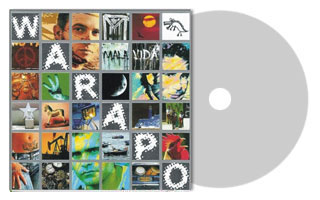12.20.22 Warapo

Warapo, a Cuban group, founded in April 1998 at the Central University of Las Villas. At that time, they weren’t called Warapo, but rather Séxtasis. For two years after their formation, they were one of the most prominent groups within the Cuban Amateur Artists Movement.
Among the accolades it received during this period was the award for Best Amateur Group at Cuban Universities. In October 2000, Warapo became a professional group, led by Alexei González, who also works as the musical arranger.
Musicians without formal training, cyberneticians, accountants, and others make up this group. Its founders include Elder González, the group’s composer, and Amílcar Pérez, its lead vocalist.
Warapo’s repertoire consists of its members’ own works as well as works by young composers. Their arrangements fuse elements of universal music with Cuban music. Among the musical genres they cultivate are Cha-Cha-Cha, Pop, Guaracha, Son, Rock, Caribbean rhythms, and the hard-driving Timba habanera.
This group has shared the stage with prominent figures in Cuban music such as David Álvarez, José Luis Cortés, César Portillo de la Luz, Elena Burke, Pancho Céspedes, David Blanco, Lourdes Torres, Emilio Vega, and Argentine singer-songwriter Alejandro Lerner, among many others.
Warapo’s debut album, Mala Vida, was released in 2004 and featured musical production by Emilio Vega. “Dolo y pena,” “No me cojas pa’eso,” and “Daysi” are some of the songs on the album.
Her second album, released in 2008, was titled Tengo nada (I Have Nothing) and produced by José Antonio Leyva. The album features thirteen tracks, all referencing everyday stories with witty lyrics about ugliness, sex, love, and nightlife. These include: El feo (The Ugly), Manuela (Manuela), Tranquilo y pegao (Tranquil and Pegao), Víbora (Virgin), Infinita la vida (Infinite Life), and Oxígeno (Oxygen), written by Benito de la Fuente.
This album showcases genres ranging from pop, ballads, and tropical music, a mix characterized by a pop accent; hence the sound that has made them a favorite with young audiences. Tengo nada was presented at a successful concert at the Mella Theater (Line No. 657, Vedado, Plaza de la Revolución, Havana), where they performed songs from their previous album. It also earned four nominations at Cubadisco 2008.
To celebrate their tenth anniversary, Warapo performed a recital at the Karl Marx Theater in Havana (1010 1st Ave., Miramar, Playa, Havana). They performed songs from their two albums, “Mala Vida” and “Tengo Nada.” Guest artists included Isis Flores, David Álvarez, Dayany Lozano, Buena Fe, Leony Torres, Tania Pantoja, Gente de Zona, Kelvis Ochoa, and Insurrecto.
In May 2011, they performed on nightclubs in Ho Chi Minh City, located in southern Vietnam.
Warapo has been hailed by critics as one of the most unique projects on the Cuban sound scene of the 2000s.








